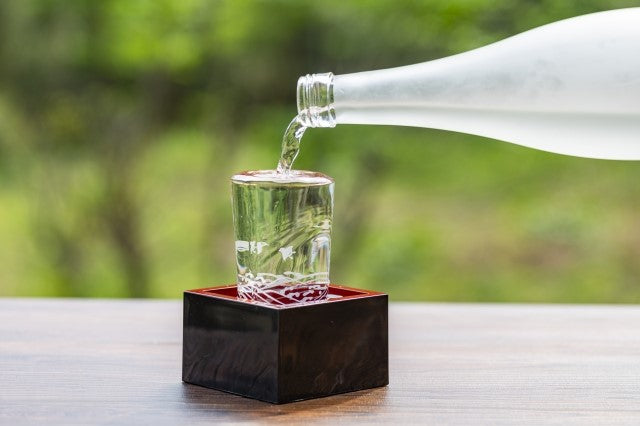We all know the importance in picking out just the right sake for an enjoyable meal time – but have you realized how much significance the sakeware we use can bring to the table as well? This time, let’s look into how glass, among all other typical choices, can be a perfect tool to enhance our sake experience.
Why is Sakeware Important At All?
As we all know, Japanese sake can be divided into 4 big categories:
Kunshu – is well-loved for its strong fragrance. This includes Ginjo, Junmai Daiginjo.
Soushu – is fresh and light. This includes Honjozo and Nama-zake.
Jukushu – has a unique scent that is born from aging sake. Examples include Koshu, Chozo-shu.
Junshu – gives a lovely rice aroma. This includes Junmai sake.

Apparently, each of these sake has its own unique aroma and flavor. To bring out the best in the particular sake you’ve chosen, it comes to using the right glassware for that particular scenario.
So what should we pay attention to while picking out the perfect container?
We can bear in mind that while the overall shape of the glass has a great influence on how the aroma spreads and how we get to feel the sake in our mouth, the material itself impacts the temperature and texture of the sake too.
Various Shapes, Different Strengths
When it comes to the mouth of the glass, a wide mouth enhances the aroma of the sake to spread. A narrow mouth, on the contrary, keeps the aroma to stay longer in the glass instead.
At the same time, the depth of the glass affects the intensity of the aroma. While a deep glass concentrates the aroma, a shallow glass dilutes it.
Last but not least, even the shape and thickness of the bottom of the glass can make an impact on the mouthfeel. If the bottom of the glass is flat and thick, sake can spread easily in the mouth, while sake contained in a round and thin bottom tends to clump together.
You may refer to the table below for recommendations on which glassware to use for different sake:
|
Sake |
Width |
Depth |
Glassware Examples |
|
Kunshu |
Wide |
Deep |
Wineglass; Tumbler |
|
Soushu |
Narrow |
Shallow |
Champagne glass; Flute glass |
|
Jukushu |
Narrow |
Deep |
Brandy glass; Old-fashion glass |
|
Junshu |
Wide |
Shallow |
Burgundy glass; Bowl glass |
The choice of material

As we are all aware, glass is a material that does not give out any odor nor taste of its own, making it the perfect sakeware to directly convey the taste and aroma of the drink it contains. It is not difficult to imagine how a good sake can taste just that much better while drunk chilled in a glass!
Another characteristic of glass is it being a smooth and transparent container, allowing the sake to literally show its “true color”!
As a sidenote and for comparison, do you know there is now a thing called “wooden glassware”?
Since wood has low thermal conductivity and retains heat well, it naturally goes well with sake that is to be drunk warm, such as mature and mellow sake. Having definitely a rougher surface than glass as well as being a non-transparent container, we can easily imagine how the experience of sake-drinking can be created in a totally different atmosphere.
Summary
There can be many reasons why we choose a particular sake over another – from the sake’s origin, brewing method employed, to the taste it promises. But after we bring home our favorite bottle, it is up to us to make use of the right tool to create our very own sake time, which can definitely be a memorable sensual experience.

